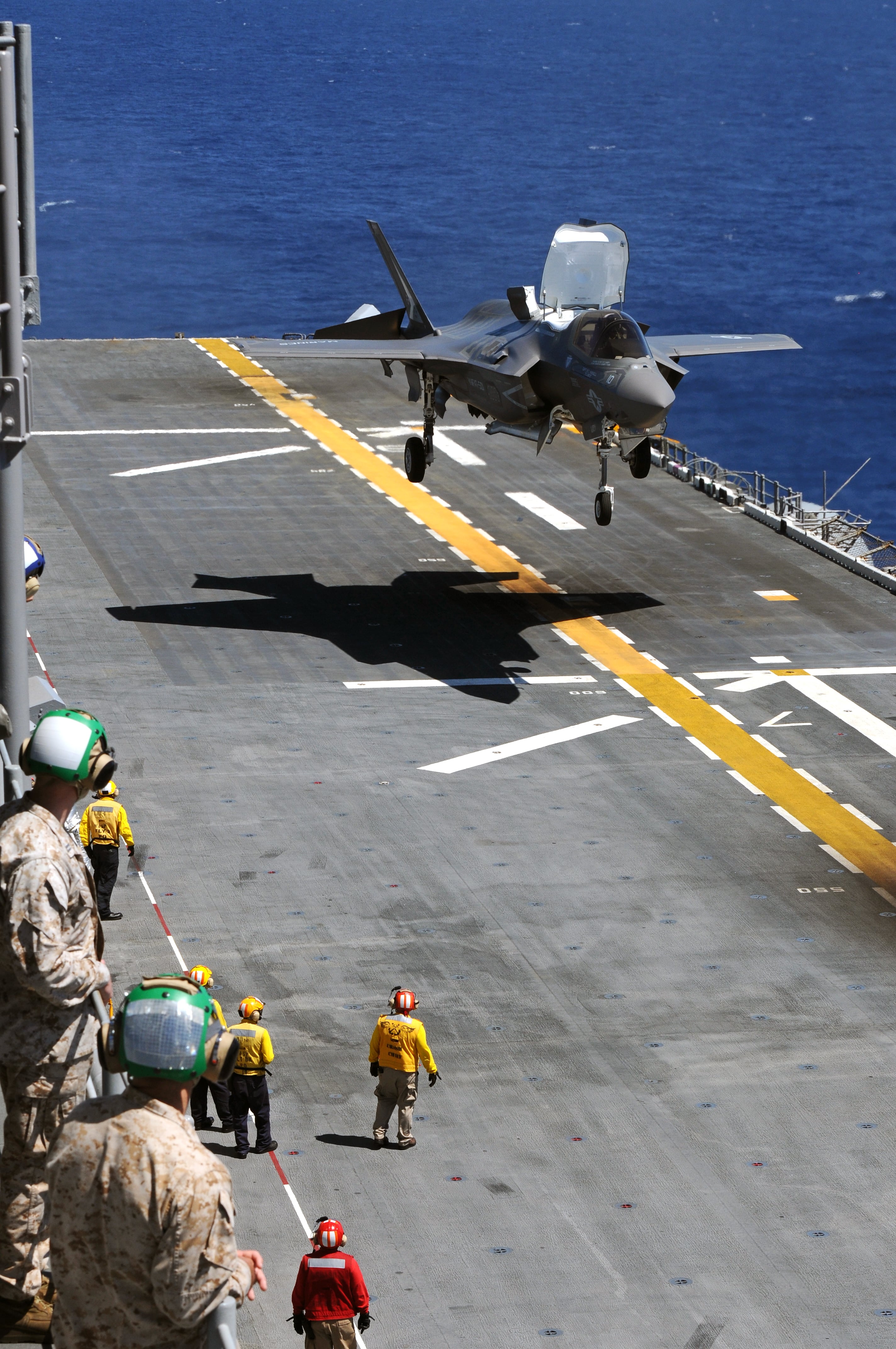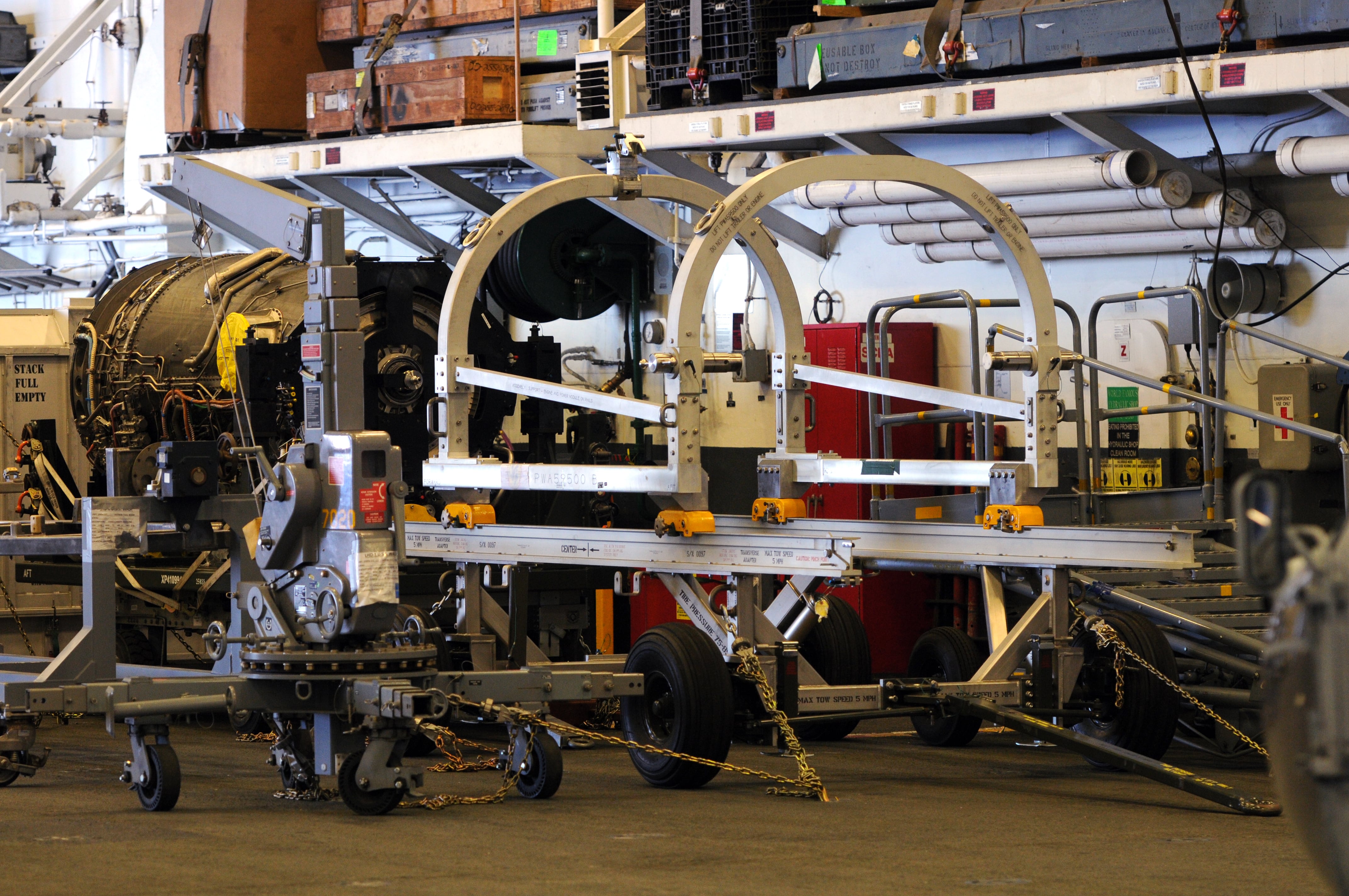ABOARD THE AMPHIBIOUS ASSAULT SHIP USS WASP — The Marine Corps' latest fighter jet has recently completed more than 80 successful sorties as part of its first operational testing at sea, officials said Tuesdaytoday.
Early Tuesday morning, F-35B Jjoint Sstrike Ffighters — the service's short-takeoff, vertical-landing variant of the aircraft — screeched across the deck of the amphibious assault ship Wasp ASP in quick succession, racking up the tally further.
Pilots in six aircraft are now conducting day and night operations off the mid-Atlantic seaboard as the first part of the final phase of real-world testing before the aircraft reaches its long-anticipated initial operational capability milestone this July. Aircraft participating in this round of testing are drawn from Marine Fighter Attack Squadron 121 out of Marine Corps Air Station Yuma, Arizona; Marine Fighter Attack Training Squadron 501 out of Marine Corps Air Station Beaufort, South Carolina; and Marine Operational Test and Evaluation Squadron 22 out of Marine Corps Air Station New River, North Carolina.
The multi-role aircraft, which sports electronic warfare, ISR and kinetic attack capabilities, is the linchpin of the Marine Corps' future amphibious strike capability. It will be a vital tool for the service that serves as the nation's go-to crisis response force, said Lt. Gen. Jon Davis, the assistant commandant for Marine aviation, while observing the testing that began May 18 and will continue through until May 29.
"We will be not just the nation's force in readiness, but the nation's force of choice," he said, touting its ability to be launched on a moment's notice from amphibious ships floating parked just miles off the shore of any country or continent.
Beyond basic shipboard launching and landing, test pilots have been conducting elaborate war games, pitting F-35s against each other in dogfights defined by the aircraft's next-generation sensor technology.

A Marine F-35B joint strike fighter lands on the amphibious assault ship Wasp Tuesday during operational testing at sea.
Photo Credit: James K. Sanborn/Staff
But perhaps the most valuable lessons learned are being gleaned by maintainers and logisticians who must figure out how to service and repair a strike fighter that is bigger than an F/A-18 Hornet and more complex than an AV-8B Harrier.
British Lt. Cdr. Beth Kitchen, who is assigned to VMFAT-501, said that has meant everything from repairing the mundane like changing a tire to the complex like changing and engine. Those are all tasks that have been successfully mastered ashore, but deck motion, space constraints and the need to tie assets down complicate many procedures, she said.
Kitchen She and the maintainers she oversees have now installed and uninstalled components including the lift fan that gives the aircraft its STOVL capability, canopies and ejection seats. The idea is not only to both ensure maintainers are correctly trained and can execute their tasks, but also to document difficulties so they can be remedied before the aircraft is fully operational and deployed. So far, however, Kitchen said they have not found the need for many changes.
"We are confident we can maintain these aircraft at sea," she said.
In fact, the biggest and most important question has now been answered regarding the aircraft's behemoth engine produced by Pratt and & Whitney. One was successfully brought aboard the Wasp ASP May 20 via MV-22B Osprey tiltrotor aircraft. It now sits in the ship's maintenance hangar hanger.

A custom-built cradle for an MV-22B Osprey to internally transport an F-35B joint strike fighter engine sits aboard the amphibious assault ship Wasp. The F-35B engine can be seen to the left.
Photo Credit: James K. Sanborn/Staff
The successful exercise proved that the engine could be placed on a custom-built cradle that fits in an Osprey without surpassing weight and balance limits that would degrade the tiltrotor's handling beyond acceptable limits.





